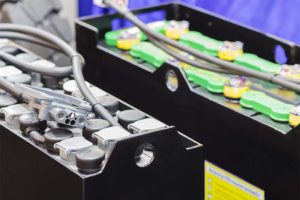Battery maintenance and idle times
Batteries in cleaning machines need attention during downtimes like during the current pandemic. These instructions are crucial to keeping batteries alive.
Listen to the “Straight Talk” video, with battery experts Mike Best, Andy Riddle, and Tom Coyne, “Batteries That Fail” on YouTube or below:
Battery maintenance in cleaning equipment, such as battery-powered floor cleaning and vacuuming machines, is essential, and they still require attention to keep them alive during downtime.
Due to the current coronavirus pandemic many facilities are shut down and sometimes even power is turned off. The following instructions are crucial to follow in order to make the batteries survive longer idle times. This avoids even longer downtime and high costs.
Prepare before you go
Before leaving a battery for a longer break, the battery has to be fully charged and disconnected from all devices. Alternatively, batteries can stay connected to the charger for the idle time; it will not do them any harm. This way, once the power is switched back on eventually, the batteries will get recharged immediately.
Why do batteries fail?
Mike Best, technical support manager for Enersys UK, says, “All batteries self-discharge over their live. Also, even small loads from technical devices will drain power and therefore accelerate the process. Once the battery is at a very low state, it cannot be charged up again.”
Replacing a dead battery involves high costs. Tom Coyne, sales director at Battery Service Hub, estimates the costs for a new battery between 300-3,000 GBP depending on size and type. Further, an unexpected dysfunctional battery can also lead to higher downtimes even after the shutdown is over.

Check before getting back to work
Before a longer unexpected idle time ends, Coyne says, “Try to get access to the cleaning equipment before the opening day, and make sure all works fine. Best practice would be to connect the batteries to a charger.”
Andy Riddle, director at Battery Service Hub adds, “Getting access to the facility and the equipment might be a big challenge during the current crisis.” However, it avoids bad surprises.
Breaks that break batteries
In the worst cases, 7-10 days may already be enough to kill a battery, depending on the charging level before it was left idle and the cleaning machine it might have been connected to. According to Best, a fully charged battery that is not connected to anything can survive a few months. In case the battery is connected to a monitor, it needs to be recharged within a month.
Maintaining batteries before idle times is always important—not just during a major shutdown. For instance, before leaving for the weekend, every battery should be put on a charger. Riddle says, “this is a basic step in handling cleaning machines and equipment.”
By Karina Kayser, international marketing communication specialist at ISSA, the worldwide cleaning industry association
